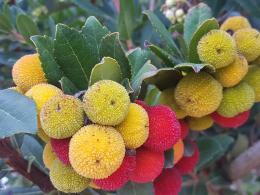Pomegranate Trees Punica Granatum
1. Add items to basket
2. Go to the basket
3. Enter your postcode in Delivery Price Check
Pot size: 18 Litres
Plant ID: 2835 64
View plant size:Plant shape: Bush
Pot size: 18 Litres
Plant ID: 11733 64
View plant size:Plant shape: ½ standard
Trunk height: 70-90 cm
Trunk girth: 8-10 cm
Pot size: 25 Litres
Plant ID: 11731 64
View plant size:Plant shape: 1.8m x 1.2m wide metal frame
Pot size: 70 Litres
Plant ID: 5014 64
View plant size:Plant shape: Bush
Pot size: 110 Litres
Plant ID: 5884 64
View plant size:Plant shape: Ball
Pot size: 160 Litres
Plant ID: 11794 64
View plant size:Plant shape: Specimen Plant - Ball
Pot size: 230 Litres
Plant ID: 8115 64
View plant size:Plant shape: Specimen Plant - Crown Lifted
Plant variety: Freshly potted
Pot size: 160 Litres
Plant ID: 11801 64
View plant size:Plant shape: Specimen Plant - 1/2 Standard
Trunk height: 40-50 cm
Trunk girth: 30-35 cm
Pot size: 70 Litres
Plant ID: 8114 64
View plant size:Plant shape: Specimen Plant - Parachute
Pot size: 230 Litres
Plant ID: 15307 64
View plant size:To check delivery cost add your plants to basket, then you can type your postcode in our Quick Delivery Price Check.
Punica Granatum or Pomegranate Tree
The Punica Granatum, commonly called the Pomegranate Tree is a deciduous fruit tree whose origins can be traced back to Iran where it grows wild. Pomegranate trees are native to much of the Middle East but can also be found flourishing in many parts of Europe. In its natural state, the pomegranate tree grows as a large bush to a height of 2 to 4 metres. However, the Pomegranate is commonly trained into a tree form, and is an attractive decorative tree for small gardens provided it is in a sunny protected spot. Our specimens have a lovely ¼ standard shape and have big bushy crowns. When grown as a tree, these pomegranates will reaches a height of between 5 to 8 metres.
Pomegranate Trees despite their middle-eastern origins, will grow in the Southern UK. Famously, there is a mature fruiting Pomegranate Tree growing in the Chelsea Physic Garden (London’s oldest botanical garden founded in 1673, as the Apothecaries’ Garden, with the purpose of training apprentices in the identification and use of medicinal plants). In the spring and summer months, the pomegranate tree produces reddish-orange flowers on new growth. It develops two types of flowers: bell-shaped and vase-shaped. The vase-shaped flowers are sterile and the bell-shaped flowers are fertile. The pomegranate tree requires no other pollinator tree and is perfectly capable of self-pollinating. However, it will produce a more ample fruit crop if a pollinator pomegranate tree is planted in close proximity. After flowering, Punica Granatum develops lovely rounded fruit that resembles red apples. The fruit features reddish leathery skin that encases from 200 to 1400 red, juicy, flavourful seeds and a yellowish edible rind. Each fruit measures from 5 to 15 centimetres in diameter. The juice of the pomegranate was once used to create dyes and inks.
Mature pomegranate trees feature thick bark which makes them cold-hardy. The tree grows well in the southern UK when planted in a sunny sheltered location. Plant the pomegranate tree in a full sun in a site that has well-draining soil. Pomegranate trees will not tolerate overly saturated soil. The trees prefer moderately moist soil, but once established they are drought hardy. It generally takes a pomegranate tree three years after planting before it begins to develop fruit.
Punica Granatum is relatively carefree. If desired, it can be lightly pruned annually to maintain its size. Any damaged or diseased limbs should always be promptly removed.























